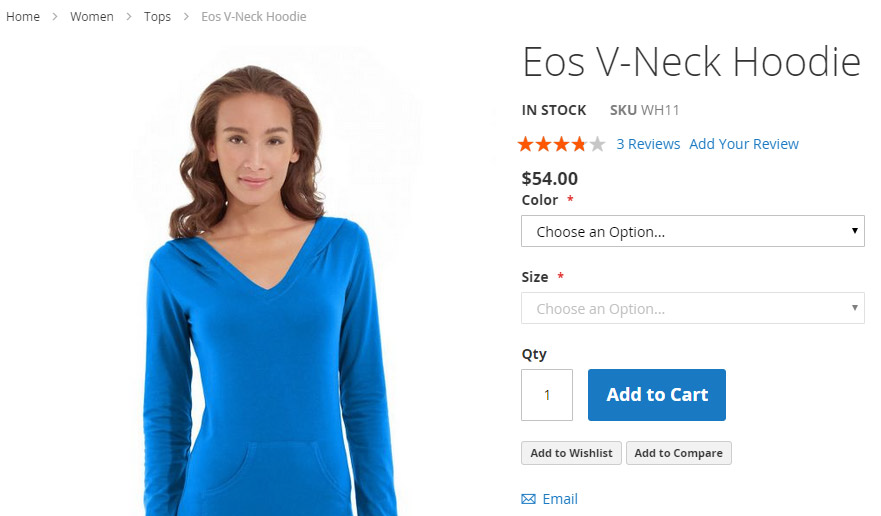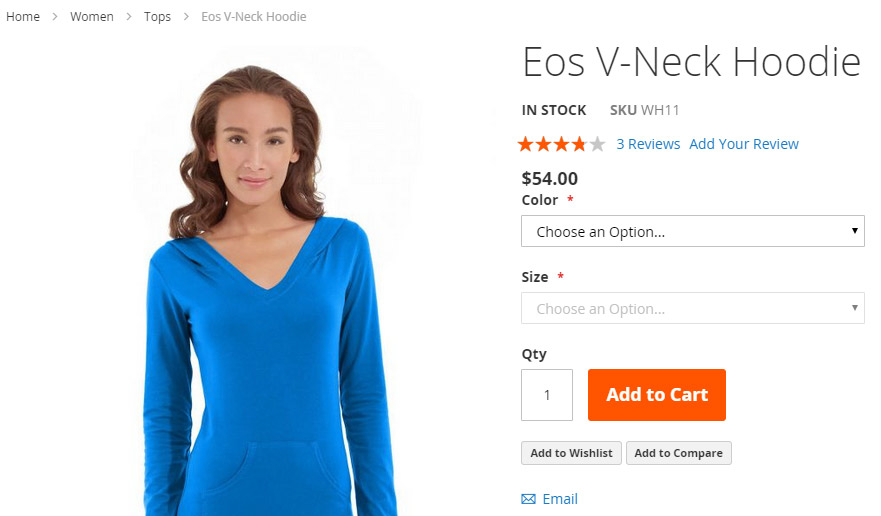Overview
Magento 2 incorporates LESS, a CSS pre-processor that simplifies the management of complex CSS files. To define styles of a Magento store, you can use both - CSS and LESS stylesheets.
Magento application provides a built-in LESS UI library, which you can optionally extend.
To customize storefront styles, you need to create a custom design theme. Then you can use one of the following approaches:
- If your theme inherits from the Magento out-of-the-box Blank or Luma theme, you can override the default LESS files; for example to change the values of the variables used in the default files.
- Create your own LESS files using the built-in LESS preprocessor.
- Create your own CSS files, optionally having compiled them using third-party CSS preprocessor.
Change styles: walkthrough
Here is a simple illustration of changing styles using the first approach: changing the color of the buttons of a certain class.
In the Blank theme, the buttons of the .action.primary class, so called primary buttons, are blue. The following image illustrates this:

OrangeCo wants to change the color of the primary buttons to orange. To achieve this, they do the following:
- Create a new Orange theme, which inherits from the Blank theme.
- In the Orange theme directory add the overriding
app/design/frontend/OrangeCo/orange/web/css/source/_theme.lessfile with the following code:
// Primary button @button-primary__color: @color-white; @button-primary__hover__color: @color-white; @button-primary__background: @color-orange-red1; @button-primary__hover__background: @color-orange-red4; @button-primary__border: 1px solid @color-orange-red2; @button-primary__hover__border: 1px solid @color-orange-red2;
When OrangeCo applies their theme, the primary buttons will look like on the following image:

What's in this chapter
Other topics of this chapter describe the following:
- Including CSS: how stylesheets are organized and included to be used for store pages in the Magento application.
- CSS Preprocessing: how stylesheets are preprocessed and compiled
- Magento UI Library: how to use the Magento styles library in your custom themes
- Using Custom Fonts: how to add custom fonts
- Customizing styles illustration: how to change a theme鈥檚 color scheme using Magento UI library.
Find us on